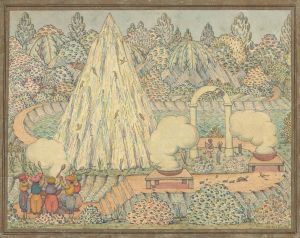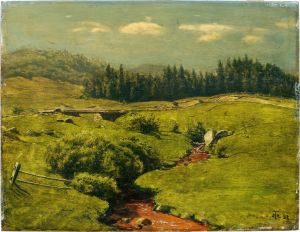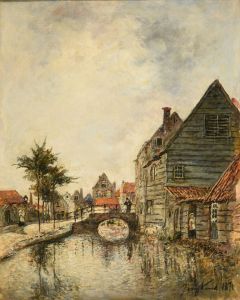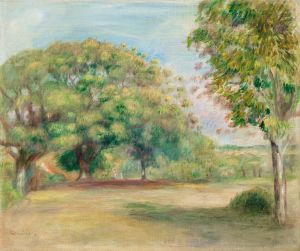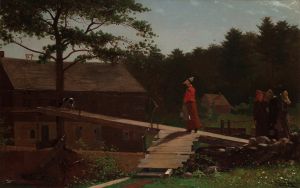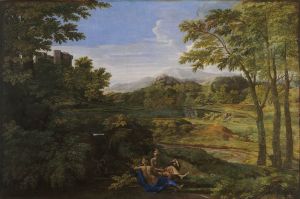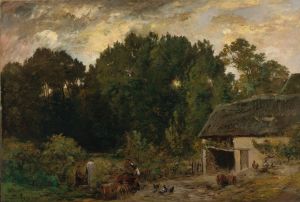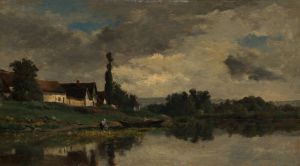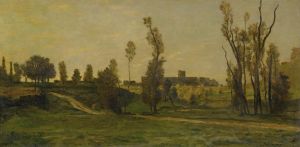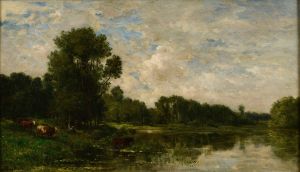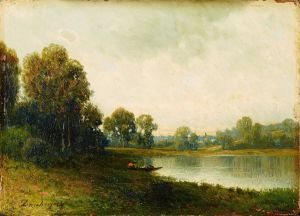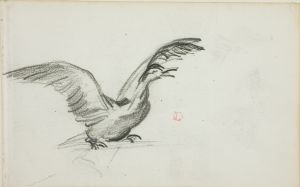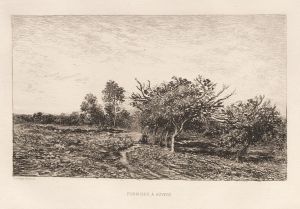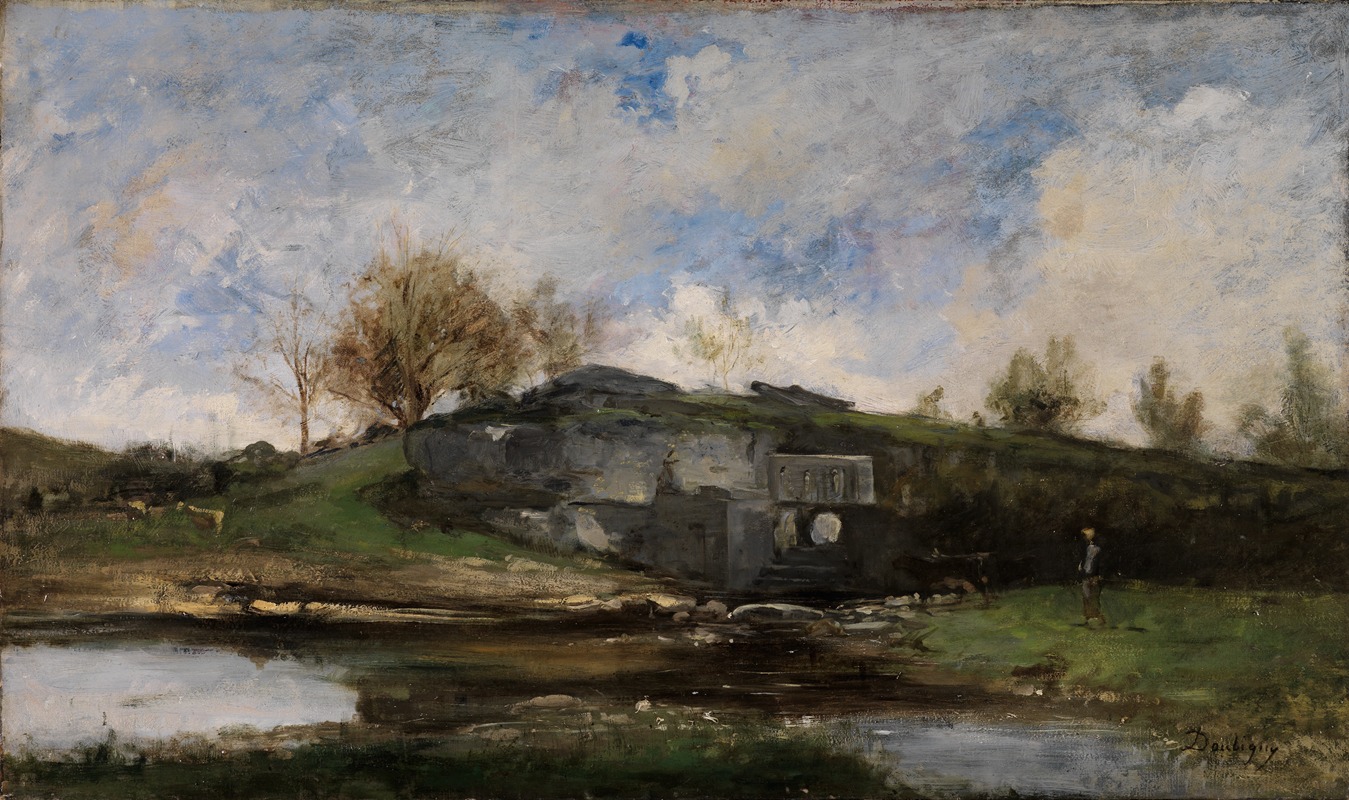
Schleuse im Tal von Optevoz
A hand-painted replica of Charles François Daubigny’s masterpiece Schleuse im Tal von Optevoz, meticulously crafted by professional artists to capture the true essence of the original. Each piece is created with museum-quality canvas and rare mineral pigments, carefully painted by experienced artists with delicate brushstrokes and rich, layered colors to perfectly recreate the texture of the original artwork. Unlike machine-printed reproductions, this hand-painted version brings the painting to life, infused with the artist’s emotions and skill in every stroke. Whether for personal collection or home decoration, it instantly elevates the artistic atmosphere of any space.
Charles François Daubigny (1817–1878) was a prominent French landscape painter associated with the Barbizon School and a precursor to the Impressionist movement. His works are celebrated for their naturalistic depictions of rural landscapes and rivers, often painted en plein air (outdoors) to capture the transient effects of light and atmosphere.
One of Daubigny’s notable works is Schleuse im Tal von Optevoz (translated as Lock in the Valley of Optevoz). This painting reflects Daubigny’s characteristic style, emphasizing the serene beauty of the French countryside. The artwork depicts a lock in the valley near Optevoz, a small village in southeastern France. The scene is rendered with a delicate balance of light and shadow, showcasing Daubigny’s skill in portraying the interplay between water, land, and sky. The composition is marked by its tranquil atmosphere and attention to detail, which were hallmarks of Daubigny’s approach to landscape painting.
Daubigny frequently traveled through rural France, drawing inspiration from its natural scenery. Optevoz, located in the Isère department, was one of the places he visited and painted. The area’s picturesque landscapes, including its valleys and waterways, provided an ideal setting for his artistic exploration. His works from this region often highlight the harmony between human-made structures, such as locks or mills, and their surrounding natural environment.
The painting is executed in oil on canvas, a medium Daubigny commonly used. His technique involved loose, fluid brushstrokes that conveyed a sense of immediacy and spontaneity. This approach influenced later Impressionist painters, including Claude Monet, who admired Daubigny’s work and considered him a mentor.
Schleuse im Tal von Optevoz is part of Daubigny’s broader oeuvre, which includes numerous depictions of rivers, locks, and rural scenes. These works not only document the landscapes of 19th-century France but also reflect the artist’s deep connection to nature. Today, Daubigny’s paintings are held in major art collections worldwide, including the Musée d’Orsay in Paris and the National Gallery in London.
While specific details about the provenance or current location of Schleuse im Tal von Optevoz are not readily available, the painting remains an important example of Daubigny’s contribution to the development of modern landscape painting. His innovative techniques and dedication to capturing the essence of the natural world continue to be celebrated in the history of art.





